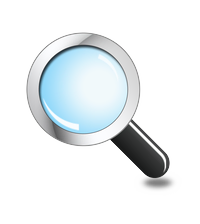HEATING AND COOLING Mold Remediation Services
Residential A/C Mold Remediation Solutions
A Plus Enviro-Services property duct and vent cleaning experts are qualified and trained in domestic duct cleaning and A/C system mold cleaning and remediation. We supply specialized domestic HVAC duct and vent cleaning, mold remediation, and other cleaning company. Our objective is to provide cost effective, instructional, truthful, regional and high quality assistance to our property clients by enhancing their indoor air quality, energy efficiency, and safety. Did you know air-borne pollutants are pulled into the air ducts whenever the cooling and heating system runs. In time, these impurities increase inside the ductwork, forming an ideal breeding ground for mold, bacteria, fungis, and other microorganisms.

How We Do It
The presence of microbial growth (mold) in a HVAC system is a common problem and a variety of elements can contribute to the microbial development. The HVAC system, consisting of piping and drain pans, can be sources of microbial development. A raised mold condition can cause various negative effects with the most common problem being allergic reaction symptoms. The products https://precisionenviro.net/mold-allergies-or-symptoms-do-you-have-them/ new is that usually mold contamination in HEATING AND COOLING systems and air vents are restricted to little locations.
Cleaning up is normally not very complex. Do not squander your cash with unqualified companies and scammers. Call us for a complimentary and academic quote today. Strong Acid Water Sanitizer A Plus Enviro-Services makes use of a strong acidic water as a sterilizing agent because it's organic, entirely safe for people, animals, and the environment. This strong Acidic Water is an https://precisionenviro.net/asbestos-inspections-assistance-inspectors-health-safety/ electrolytic water with electric potential, which suggests that its chemical decay is produced by passing an electrical current through a liquid or option containing ions. This includes the hypochlorous acid (SDS) produced from an anode when electrolysis occurs. It is made by using an electrolysis enhancer to tap water, this in itself is not a chemical.
Strong Acidic Water 2.5 pH works as an antifungal, anti-bacterial, and an antiviral agent. This water eliminates germs within approximately 30 seconds, and since of this the water is stronger than popular disinfectants and it has multi-purpose use. Strong Acidic water was approved for decontaminating food in June 2002, in accordance with the Food Hygiene Law, under the name hypochlorous acid water.
Find out more Why Choose United States A Plus Enviro Solutions Inc. DBA Air Duct Cleansing Plus is completely accredited, bonded and guaranteed. What our customers are saying We can extremely recommend them as an incredibly friendly and expert contractor who helped us tremendously with a recent inspection of our house's air duct/vent system.
Indoor mold Wikipedia
Fungal growth that establishes on wet materials Indoor mold on the head jamb of the window in a multi-storey building. Mold (American English) or mould (British English), likewise in some cases described as mildew, is a fungal development that develops on damp materials. Mold is a natural part of the environment and plays an important part in nature by breaking down dead organic matter such as fallen leaves and dead trees; inside your home, mold growth must be avoided. Mold replicate by ways of tiny spores. The spores resemble seeds, however invisible to the naked eye, that drift through the air and deposit on surfaces. When the temperature, wetness, and available nutrient conditions are proper, the spores can form into new mold nests where they are transferred.
Exposure to high levels of mycotoxins can lead to neurological problems and death. Extended exposure (for instance, daily direct exposure) can be especially damaging. Mycotoxins can continue the indoor environment even after death of the fungi. They can adhere to dust particles and can spread out through the air attached to these dust particles or spores. [3] There must be very specific temperature and humidity conditions in order for fungis to produce mycotoxins.
Symptoms [edit] Signs of mold exposure might include nasal and sinus blockage; runny nose, eye irritation; scratchy, red, watery eyes, breathing issues, such as wheezing and trouble breathing, chest tightness, cough, throat irritation, skin inflammation (such as a rash), headache, and persistent sneezing.
Immune-compromised people and people with chronic lung diseases, such as obstructive lung disease, may buckle down infections in their lungs when they are exposed to mold. These people need to keep away from locations that are most likely to have mold, such as compost piles, cut yard, and woody locations.
Asthma [edit] Infants may develop respiratory signs as an outcome of exposure to Penicillium, a fungal genus. Indications of mold-related respiratory issues in an infant include a persistent cough or wheeze. Increased direct exposure increases the probability of developing breathing symptoms throughout the first year of life. Studies have indicated a connection in between the likelihood of establishing asthma and exposure to Penicillium.
Causes and growing conditions [modify] Mold is discovered everywhere and can grow on nearly any compound when moisture exists. They reproduce by spores, which are brought by air currents. When spores land on a wet surface area suitable for life, they begin to grow. Mold is normally discovered inside your home at levels which do not impact most healthy people. Due to the fact that typical building products can sustaining mold growth and mold spores are common, mold growth in an indoor http://www.bbc.co.uk/search?q=Mold inspection environment is normally connected to water or moisture exposure and might be caused by insufficient drying of flooring products (such as concrete). Flooding, leaking roofs, building-maintenance or indoor-plumbing problems can cause interior mold development. Water vapor frequently condenses on surface areas cooler than the moisture-laden air, making it possible for mold to flourish. [citation needed] This moisture vapor goes through walls and ceilings, typically condensing throughout the winter in environments with a long heating season. Floors over crawl areas and basements, without vapor barriers or with dirt floors, are mold-prone. The "doormat test" detects wetness from concrete pieces without a sub-slab vapor barrier.
